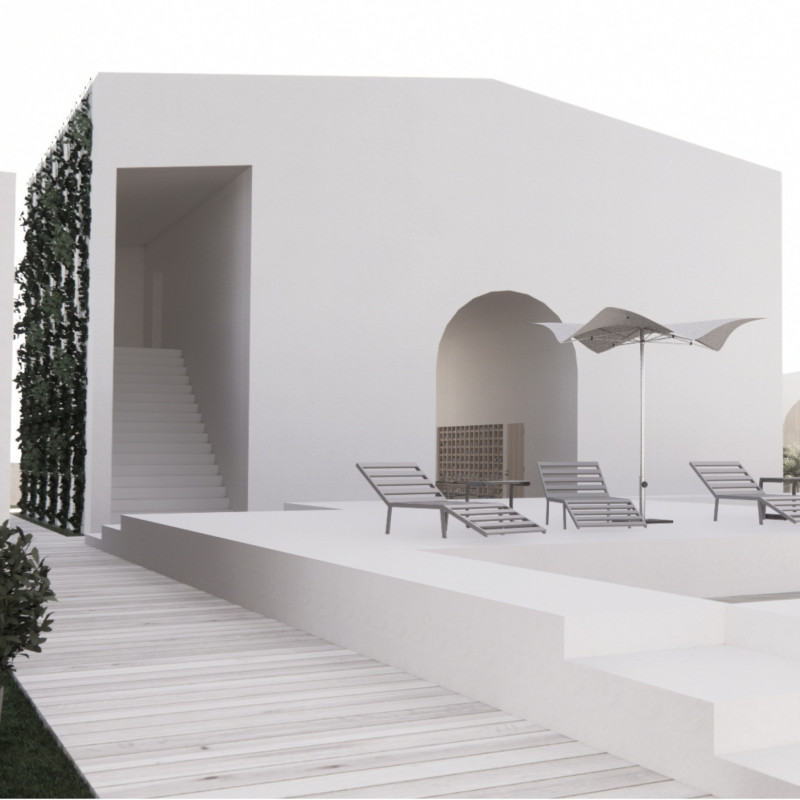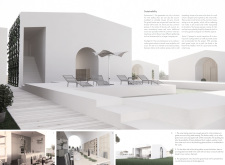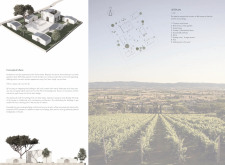5 key facts about this project
At its core, the Tili Wine project serves multiple functions, targeting both privacy for guests and communal interaction. The configuration includes a series of guest houses thoughtfully dispersed across the site, connected by shared areas that encourage social engagement. Each unit is designed to provide welcoming spaces that engage with the outdoor environment while ensuring comfort and privacy for visitors. The architectural design emphasizes modern aesthetics while respecting the traditional elements of the region's architectural heritage.
The architectural form of the guest homes is characterized by a gabled roof, echoing the silhouette of local buildings and lending a touch of familiarity to the structures. The use of light colors for the exterior plaster contributes to a sense of calmness, allowing the buildings to blend seamlessly into the rolling hills and vineyards that surround them. The entrance to each unit is designed to be inviting, providing guests a sense of warmth from the moment they arrive.
Material selection plays a crucial role in the overall character of the project. The juxtaposition of durable plaster on the exteriors with wooden elements within the interiors creates a balanced aesthetic. Wood adds warmth and texture to the spaces, reflecting a natural approach that resonates with the local environment. Metal features, used in outdoor furniture and structural supports, enhance both functionality and modern appeal. Furthermore, large glass windows and sliding doors facilitate a dialogue between the indoor and outdoor spaces, allowing natural light to flood the interiors and providing unobstructed views of the stunning landscape.
The common areas, which include a wine tasting space, dining facilities, and leisure lounges, are integral to the design. These communal spaces foster community interaction and socialization among guests, creating an environment conducive to relaxation and enjoyment. They are designed with ease of access in mind, ensuring that every visitor can fully appreciate the hospitality experience that Tili Wine aims to provide.
Unique design approaches manifest in the holistic way the project engages with its landscape. The vaulted ceilings of the guest houses, informed by the elegant curves of a wine bottle, serve both aesthetic and functional purposes. This design choice not only enhances the sense of space but also integrates a distinctive narrative linked to the region's viticulture. Additionally, sustainability is a guiding principle throughout the project, with systems in place for rainwater collection and natural ventilation that align with environmentally responsible practices.
Overall, the Tili Wine Guest Homes exemplify thoughtful architectural design that prioritizes human experience while respecting the natural context in which they are situated. This project represents a well-conceived blend of modern architecture and traditional influence, creating inviting, functional spaces for guests. Exploring the architectural plans, sections, and designs further reveals the intricate details and ideas that shape this project. For those interested in architectural innovation within a serene setting, delving deeper into this project presentation will provide comprehensive insights into the architectural strategies employed and their significance in promoting a lifestyle deeply connected to nature.


























